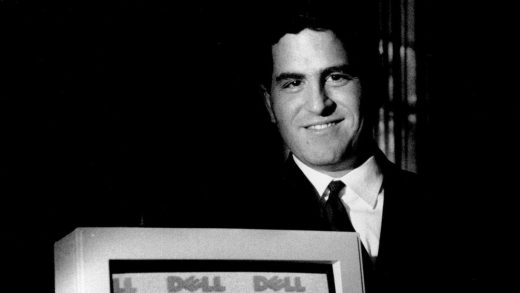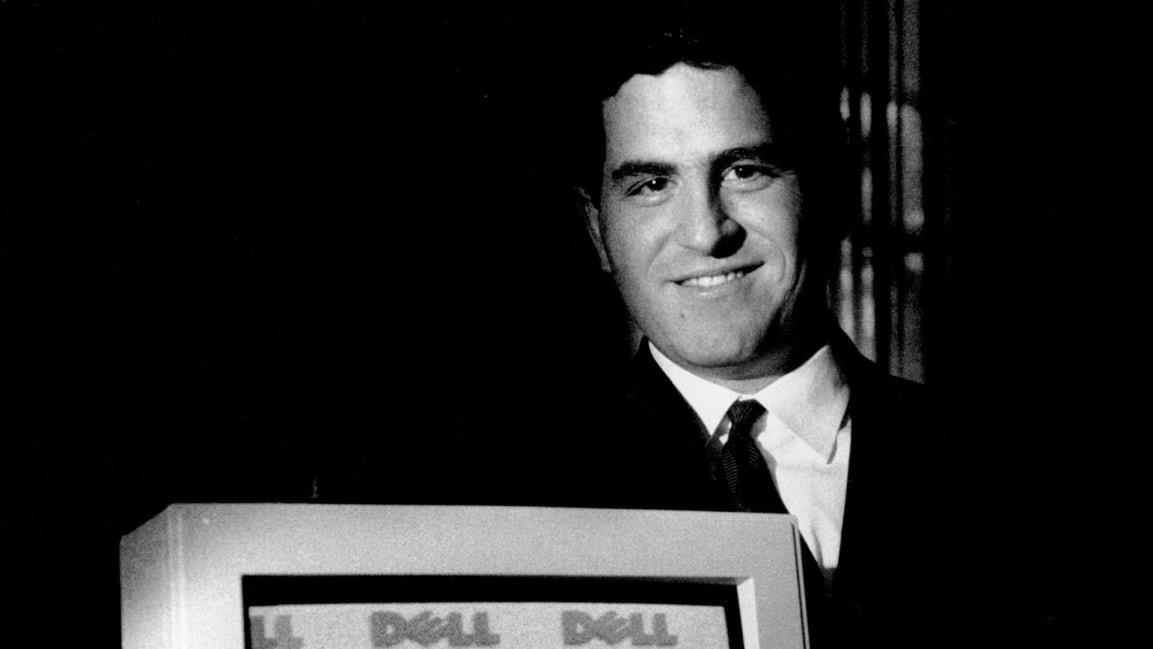Before Michael Dell built a PC empire, he was a teenage Apple II nerd
Houston was a total boomtown in the 1970s, and buildings were going up all over the place. Sometimes, as my family and I were driving along Loop 610, I would look out the window at all the shiny new buildings with flagpoles in front and think to myself that one day I would have a company and be in charge and have flagpoles in front. I didn’t know what the company would do, but this is what I dreamed about.
As you might imagine, I was not an athletic kid. I collected stamps and baseball cards; Hank Aaron was an early hero of mine, but soon my heroes became businesspeople, especially entrepreneurs who’d challenged the status quo and built businesses out of nothing— people like Charles Schwab, Fred Smith (FedEx), Ted Turner, and William McGowan (MCI). People who I was reading about in those business magazines, and whose stocks I was following as they rose meteorically.
By seventh grade I was in an advanced math class, and good enough at the subject that the teacher, Mrs. Darby, invited me to join the exclusive Number Sense Club. And one day, in the classroom where the club met, a new kind of machine showed up: a computer-teletype terminal. It wasn’t actually a computer. But the other kids in the club and I discovered that you could type mathematical equations or very basic programs on this terminal, send them off to a mainframe somewhere, and an answer would come clicking back. It was the coolest thing I’d ever seen.
I usually rode my bike to school, and halfway between my house and school was the local RadioShack store. For a brief moment in time, that now-vanished national chain not only sold police scanners, remote-controlled model planes, and helmets with sirens on them but also manufactured and sold more personal computers than any other company in the world. The TRS 80 was their pioneering machine. On my way home from school I used to stop at the store just to fool around with their display model. I’d hang out till they kicked me out.
It was the dawn of the microprocessor age, and naturally I was desperate to have my own computer. In Mrs. Darby’s class I’d learned about Byte, this magazine all about microcomputers and microprocessors. I got a subscription, read every issue cover to cover, then read it again. One month there was a piece by the cofounder of Apple, Steve Wozniak, about the company’s upcoming second entry into the personal computer market, the Apple II. The article that followed contained a detailed technical description of the Apple II. Unlike the TRS 80 (and the Commodore PET 2001, the third major entry in the brand-new personal computer market), Apple’s new machine would have a color monitor. And unlike Apple I, Wozniak continued, Apple II would feature “more memory capability, a read-only memory (ROM) BASIC interpreter, color video graphics, as well as point graphics and character graphics, and extended systems software.” Not to mention (optional) game paddles.
I had to have one.
The list price was a steep $1,298—about $5,000 in today’s money—but (I reminded my mom and dad) the beautiful part was that I could pay for it out of my own savings. I discovered early that I liked to make money: I thought it was fun! So I went to work. Early. During the summers, when I wasn’t at camp, I worked in my dad’s orthodontic practice. I would sterilize the instruments and help prepare the office for all the patients each day. I liked going to work with Dad and seeing how many patients he helped.
For my fourteenth birthday, I was allowed to take almost $1,300 of my hard-earned savings out of the bank and order an Apple II. I was beside myself with excitement waiting for it to arrive—days felt like weeks. Then one day I got a call from UPS saying the computer had arrived, but for some reason it was held up at the local warehouse. That was unacceptable. I made my father drive me over there to pick it up. When we got back home, the car had barely stopped moving in our driveway when I jumped out, carrying the precious cargo carefully, took it to my bedroom, unboxed the beautiful computer—it even smelled beautiful—and immediately took it apart to see how it worked.
Word got around that I knew a thing or two about computers. I soon began tutoring kids in the neighborhood on how to get the most out of their Apple IIs. That became a pretty lucrative sideline. I also joined HAAUG, the Houston-Area Apple User Group—hundreds of techies getting together once or twice a month at a local library to talk upgrades and trade parts and swap stories. I would hang out with these guys (they were almost all guys) and get all kinds of ideas about how to modify my Apple II. At the group meetings, I met a computer engineer in his 20s or 30s, a really smart technical guy. I thought, OK, I’m going to hang around this guy and see what I can learn.
And together we came up with something pretty cool.
At the time, developers were writing software for the Apple II, and the problem was that they’d sell one copy of the software, then everybody would copy it, and the developers would never make any money. All you needed was two floppy-disk drives: You’d put the software in one and a blank disk in the other, then type in a “copy” command. Educators were some of the worst offenders—they felt like, “Well, we’re educators, so we shouldn’t really have to pay for software.”
So my engineer buddy and I invented a copy-protecting method. Every floppy disk had a certain number of tracks—I believe it was 35. We figured out a way of programming the software so that it would write some data on a half-track, in between the tracks: When you ran the copy program, it would copy the data that was on the tracks, but not the half-tracks. Result: No copy. We went and sold this to a bunch of companies that were writing education software. It became a little business for a while, and we did all right.
Then I read that Steve Jobs was coming to Houston to speak to our user group.
It was the spring of 1980. Jobs fascinated me, not just as a computer pioneer but as an entrepreneur: I’d read about him in the business magazines, with the same intense admiration that drew me to the stories of Fred Smith and Charles Schwab, Ted Turner and William McGowan. Like those men, Jobs had started with little but an idea and an intense drive to bring that idea to fruition. And like them, he was succeeding in changing American business. Jobs was just 25, and the company he’d founded with Wozniak seemed poised to go into orbit in 1980, on the cusp of its initial public offering and the introduction of the Apple III, which promised to be to the Apple II what the Apple II had been to the Apple I.
And Jobs in person was even more compelling than he was in print. When he entered the room at our meeting, it was as though the waters parted. He spoke with passion about how the personal computer—his personal computer—was revolutionizing the world. He spoke in soaring metaphors: “It’s now possible, for the capital investment of a passenger train, to buy one thousand Volkswagens,” he said. “The difference is that those thousand people have the freedom to go where, when, how, and with whom they want to go.” With personal computers, he was saying with his personal computers—people would have the capacity to accomplish the unimaginable.
I was 15 and riveted. I couldn’t have begun to imagine that in five years, Jobs and I would be not only colleagues but friends.
Excerpted from Play Nice But Win: A CEO’s Journey from Founder to Leader, published on October 5, 2021 by Portfolio, an imprint of the Penguin Publishing Group, a division of Penguin Random House, LLC. Copyright © 2021 by Michael Dell.
(85)



